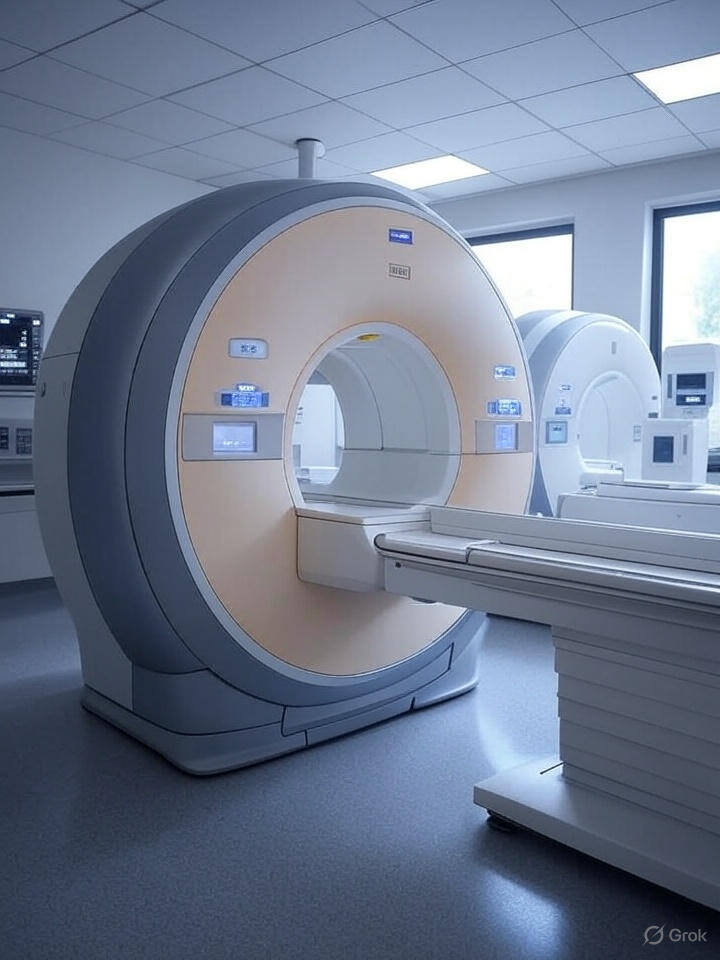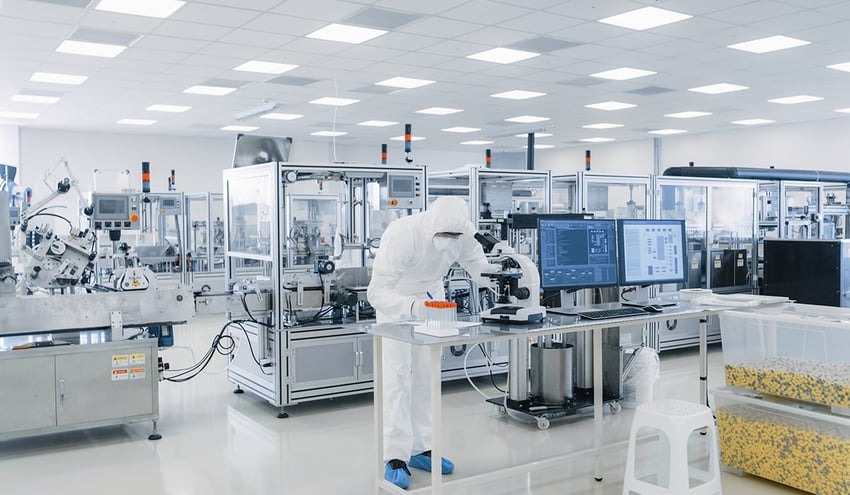The Ultimate Guide for Professionals, Researchers, and Entrepreneurs
Introduction
A medical imaging laboratory is a cornerstone of modern healthcare, research, and industrial innovation. Whether you are a professional, researcher, or business owner, establishing a medical imaging lab is a strategic investment that requires meticulous planning, regulatory compliance, and a deep understanding of technology and market needs. This comprehensive guide covers every aspect of setting up a medical imaging lab—be it for medical, research, industrial, or educational purposes. Throughout, you’ll find SEO-friendly keywords such as medical imaging lab setup, medical imaging lab equipment, diagnostic imaging business plan, and laboratory accreditation to enhance search visibility.

What is a Medical Imaging Lab?
A medical imaging laboratory is a specialized facility where advanced imaging technologies—such as X-rays, CT scans, MRI, ultrasound, and nuclear medicine—are used to visualize internal structures of the body, analyze biological samples, or inspect industrial materials. These labs are vital in hospitals, diagnostic centers, research institutes, pharmaceutical companies, manufacturing industries, and educational institutions.
Key Functions of a Medical Imaging Laboratory
- Clinical Diagnostics: Non-invasive visualization for disease detection, monitoring, and treatment planning.
- Research: Studying anatomy, physiology, disease mechanisms, and new imaging modalities.
- Industrial Quality Control: Inspecting materials and products for defects or compliance.
- Education: Training students and professionals in imaging techniques and interpretation.
Planning Your Medical Imaging Lab
1. Define Your Lab’s Purpose
- Medical Diagnostics: Focus on patient imaging and clinical services.
- Research: Emphasize experimental protocols and advanced imaging instrumentation.
- Industrial/Quality Control: Prioritize high-throughput, precision, and regulatory compliance.
- Educational: Support hands-on training and curriculum requirements.
2. Market Analysis and Business Plan
- Target Market: Hospitals, clinics, research organizations, industry partners, educational institutions.
- Competitive Analysis: Assess local and regional competitors, their services, and pricing.
- Regulatory Landscape: Understand licensing, accreditation, and compliance requirements (e.g., NABL, CAP, CLIA).
- Financial Projections: Estimate startup costs, operational expenses, and revenue streams.
- Market Trends: Analyze emerging trends such as digital imaging, tele-radiology, and AI-driven diagnostics.
3. Facility and Infrastructure
- Location: Choose a site with easy access for patients, clients, and sample logistics.
- Space Planning: Allocate areas for imaging suites, control rooms, patient preparation, reporting, storage, and waste disposal.
- Utilities: Ensure reliable water supply, drainage, electricity (with backup), and ventilation.
- Sanitation: Use materials for walls, ceilings, and floors that are easy to clean and resistant to biohazards.
- Security: Restrict access to authorized personnel only.
Essential Equipment and Instruments
A well-equipped medical imaging lab should have the following core instruments:
| Equipment | Purpose/Function |
|---|---|
| X-ray Machine | Basic radiographic imaging for bones, chest, and more |
| CT Scanner | Cross-sectional imaging for detailed anatomical views |
| MRI Machine | High-resolution imaging of soft tissues and organs |
| Ultrasound Unit | Real-time imaging of soft tissues, vessels, and fetal exams |
| PET/SPECT Scanner | Functional imaging using radioactive tracers |
| Mammography System | Breast imaging for cancer screening |
| Fluoroscopy Unit | Real-time moving images for procedures |
| C-arm | Portable imaging for surgeries and interventions |
| Bone Densitometer | Measures bone mineral density |
| Workstations & PACS | Image processing, storage, and retrieval |
| Lead Shielding | Radiation protection for staff and patients |
| Emergency Power Supply | Ensures equipment uptime during outages |
| Patient Preparation Area | For changing, consent, and pre-imaging instructions |
| Computer & Printer | Data management and reporting |
This list should be tailored to your lab’s specific focus (clinical, research, industrial, or educational).
Medical Imaging Modalities: Overview
- Radiography (X-ray): Widely used for bone, chest, and dental imaging.
- Computed Tomography (CT): Provides detailed cross-sectional images for trauma, cancer, and internal organ assessment.
- Magnetic Resonance Imaging (MRI): Superior for soft tissue, brain, spine, and joint imaging.
- Ultrasound: Safe, real-time imaging for obstetrics, cardiology, and abdominal studies.
- Nuclear Medicine (PET/SPECT): Functional imaging for oncology, cardiology, and neurology.
- Mammography: Specialized for breast tissue analysis.
- Fluoroscopy: Dynamic imaging for interventional procedures and GI studies.
Laboratory Design and Workflow
Layout Considerations
- Reception and Waiting Area: For patient registration and comfort.
- Imaging Suites: Separate, shielded rooms for each modality (X-ray, CT, MRI, etc.).
- Control Rooms: For technologists operating imaging equipment.
- Patient Preparation Rooms: For changing, consent, and pre-imaging instructions.
- Reporting and Viewing Area: For radiologists and clinicians to analyze images.
- Storage: For films, digital media, and hazardous materials.
- Waste Management: For safe disposal of biohazardous and chemical waste.
- Staff Amenities: Changing rooms, restrooms, and staff lounge.
Workflow Optimization
- Unidirectional Flow: Ensure patients and samples move in one direction to minimize cross-contamination and confusion.
- Zoning: Separate clean and contaminated areas.
- Automation: Implement Laboratory Information Management Systems (LIMS) and Picture Archiving and Communication Systems (PACS) for tracking and reporting.
- Space Requirements: Vary by lab size and purpose; plan for future expansion and new technologies.
Staffing and Training
Key Personnel
- Lab Director/Manager: Oversees operations, compliance, and quality assurance.
- Radiologists: Interpret imaging studies and supervise clinical processes.
- Radiologic Technologists: Operate imaging equipment and ensure patient safety.
- Medical Physicists: Ensure radiation safety and equipment calibration.
- IT Specialists: Manage digital systems, PACS, and cybersecurity.
- Technical Assistants: Support patient preparation and equipment maintenance.
- Administrative Staff: Handle billing, logistics, and customer service.
Training and Competency
- Initial Training: On SOPs, equipment use, safety protocols, and patient care.
- Ongoing Education: Updates on new technologies, quality standards, and regulatory changes.
- Competency Assessment: Regular evaluation to ensure proficiency and compliance.
Safety and Quality Assurance
Safety Measures
- Radiation Protection: Lead shielding, dosimeters, and regular monitoring.
- Personal Protective Equipment (PPE): Lab coats, gloves, eye protection, and masks.
- Biosafety Cabinets: For handling infectious materials.
- Chemical Safety: Proper storage, labeling, and handling of reagents.
- Fire Safety: Extinguishers, alarms, and emergency exits.
- Waste Disposal: Segregation and safe disposal of biological and chemical waste.
- Universal Precautions: Treat all specimens as potentially infectious.
- Disinfection: Clean work areas before and after use with appropriate disinfectants.
- Emergency Procedures: Know the locations of eyewash stations, showers, and first aid kits.
Quality Control
- Internal QC: Regular calibration of instruments, use of control samples.
- External QC: Participation in proficiency testing programs.
- Documentation: Maintain detailed records of procedures, results, and incidents.
- Accreditation: Seek certification from recognized bodies (e.g., NABL, CAP, ISO 15189).
Common Medical Imaging Lab Services
| Service Type | Description | Clinical/Industrial Relevance |
|---|---|---|
| X-ray Imaging | Standard radiographs for bones, chest, etc. | Trauma, orthopedics, pulmonary diseases |
| CT Scanning | Cross-sectional imaging for detailed analysis | Oncology, neurology, trauma |
| MRI | High-resolution soft tissue imaging | Brain, spine, musculoskeletal, cardiac |
| Ultrasound | Real-time imaging, Doppler studies | Obstetrics, cardiology, abdominal, vascular |
| Mammography | Breast tissue screening and diagnostics | Cancer screening, women’s health |
| PET/SPECT | Functional imaging with radiotracers | Oncology, cardiology, neurology |
| Fluoroscopy | Dynamic imaging for procedures | GI studies, interventional radiology |
| Bone Densitometry | Bone mineral density measurement | Osteoporosis diagnosis, metabolic disorders |
| Industrial NDT Imaging | Non-destructive testing of materials | Manufacturing, quality control |
These services form the backbone of clinical, research, and industrial imaging labs.
Regulatory Compliance and Accreditation
- Licensing: Obtain necessary licenses from local and national authorities (e.g., AERB in India, NABL, CLIA).
- Accreditation: Demonstrates adherence to international quality standards (ISO 15189, CAP).
- Quality Management System: Implement SOPs, equipment logs, and personnel records.
- Audit Readiness: Regular internal and external audits to ensure compliance.
- Data Security: Ensure patient and research data are securely stored and privacy is maintained.
Budgeting and Financial Planning
Startup Costs
- Infrastructure: Renovation, utilities, and security.
- Equipment: Purchase, installation, and calibration (e.g., MRI: ₹1–3 Crore, CT: ₹50 Lakh–₹2 Crore, X-ray: ₹10–50 Lakh).
- Consumables: Reagents, films, PPE, and disposables.
- Staffing: Salaries, training, and benefits.
- Licensing and Accreditation: Application fees and inspection costs.
Operational Expenses
- Reagent and Consumable Replenishment
- Equipment Maintenance and Service Contracts
- Utilities (Electricity, Water, Internet)
- Waste Disposal Services
- Insurance (Liability, Fire, Theft)
Revenue Streams
- Diagnostic Imaging Services
- Research Contracts and Grants
- Training and Educational Programs
- Consulting and Quality Assurance Services
Develop a detailed business plan with financial projections to attract investors and manage growth.
Marketing and Growth Strategies
- Digital Marketing: SEO-optimized website, social media, and online advertising.
- Partnerships: Collaborate with hospitals, clinics, and research organizations.
- Quality Differentiation: Emphasize accreditation, turnaround time, and advanced technology.
- Customer Service: Reliable reporting, transparent billing, and responsive support.
- Continuous Improvement: Invest in staff training, equipment upgrades, and new test offerings.
Trends and Innovations in Medical Imaging
- Automation and Robotics: Increase throughput, reduce errors, and improve reproducibility.
- Digital Imaging and PACS: Streamline image storage, retrieval, and sharing.
- Tele-radiology: Remote interpretation and consultation for wider reach.
- Artificial Intelligence: Advanced image analysis, pattern recognition, and predictive diagnostics.
- Hybrid Imaging (PET/CT, PET/MRI): Combines modalities for comprehensive diagnostics.
- Sustainable Practices: Green chemistry, energy-efficient equipment, and waste reduction.
Checklist for Setting Up a Medical Imaging Lab
- Define lab purpose and scope
- Conduct market and competitor analysis
- Prepare a detailed business plan
- Secure funding and location
- Design lab layout and workflow
- Procure essential equipment and consumables
- Recruit and train qualified staff
- Implement safety and quality protocols
- Obtain necessary licenses and accreditations
- Launch marketing and outreach initiatives
Conclusion
Establishing a medical imaging laboratory is a complex but rewarding endeavor that blends science, business, and regulatory compliance. By following best practices in planning, infrastructure, equipment selection, staffing, safety, and quality assurance, you can build a lab that meets the needs of healthcare, research, industry, or education. Stay updated with technological advancements and regulatory changes to ensure your lab remains competitive and compliant.
Keywords Used
- medical imaging lab setup
- medical imaging lab equipment
- diagnostic imaging business plan
- laboratory accreditation
- laboratory safety protocols
- imaging tests
- laboratory workflow
- laboratory quality control
- clinical diagnostics
- research laboratory
- laboratory automation
- laboratory compliance
- laboratory marketing strategies



